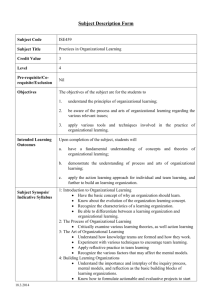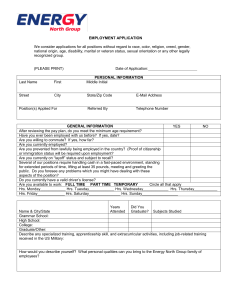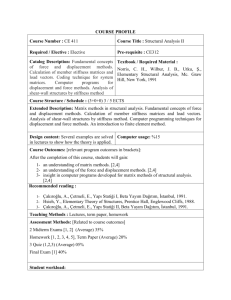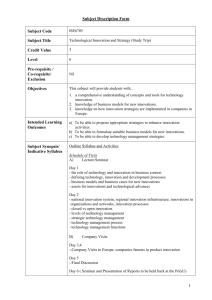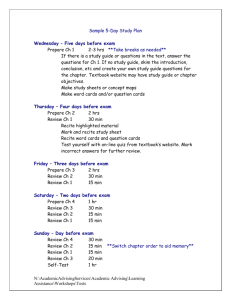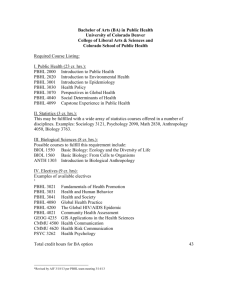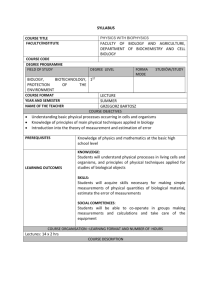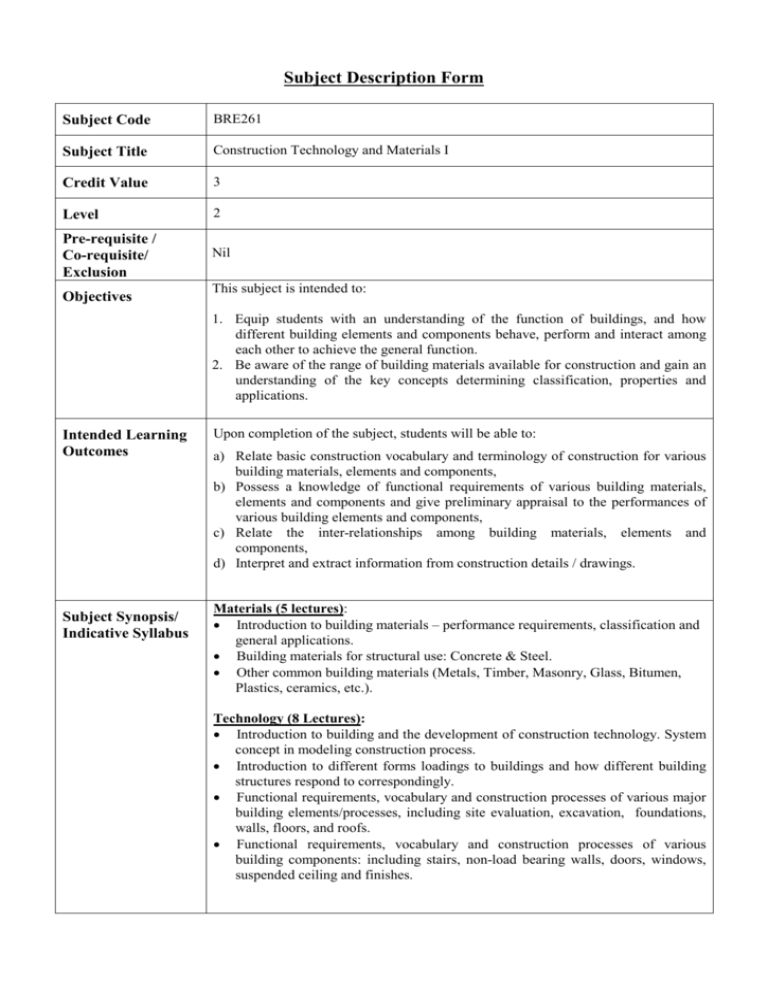
Subject Description Form
Subject Code
BRE261
Subject Title
Construction Technology and Materials I
Credit Value
3
Level
2
Pre-requisite /
Co-requisite/
Exclusion
Nil
Objectives
This subject is intended to:
1. Equip students with an understanding of the function of buildings, and how
different building elements and components behave, perform and interact among
each other to achieve the general function.
2. Be aware of the range of building materials available for construction and gain an
understanding of the key concepts determining classification, properties and
applications.
Intended Learning
Outcomes
Subject Synopsis/
Indicative Syllabus
Upon completion of the subject, students will be able to:
a) Relate basic construction vocabulary and terminology of construction for various
building materials, elements and components,
b) Possess a knowledge of functional requirements of various building materials,
elements and components and give preliminary appraisal to the performances of
various building elements and components,
c) Relate the inter-relationships among building materials, elements and
components,
d) Interpret and extract information from construction details / drawings.
Materials (5 lectures):
• Introduction to building materials – performance requirements, classification and
general applications.
• Building materials for structural use: Concrete & Steel.
• Other common building materials (Metals, Timber, Masonry, Glass, Bitumen,
Plastics, ceramics, etc.).
Technology (8 Lectures):
• Introduction to building and the development of construction technology. System
concept in modeling construction process.
• Introduction to different forms loadings to buildings and how different building
structures respond to correspondingly.
• Functional requirements, vocabulary and construction processes of various major
building elements/processes, including site evaluation, excavation, foundations,
walls, floors, and roofs.
• Functional requirements, vocabulary and construction processes of various
building components: including stairs, non-load bearing walls, doors, windows,
suspended ceiling and finishes.
Teaching/Learning
Methodology
Assessment Methods
in Alignment with
Intended Learning
Outcomes
The mode of delivering the subject comprises lectures, tutorials laboratories and
workshop training. Lectures aims at delivering the basic core concepts and
knowledge, which are to be discussed and consolidated through tutorials.
Laboratories are used for enhancing students’ comprehension on the performance of
various building materials, whereas workshop training provides hands on experience
to student on selected construction methods.
Specific assessment
methods/tasks
%
weighting
Intended subject learning outcomes to be
assessed (Please tick as appropriate)
a
b
c
d
1. Project Assignment
(Essay on Buildings)
2. Laboratory reports /
reflections on
workshop training
3. Focus Study Report
10%
√
√
20%
√
√
20%
√
√
√
√
4. Written Examination
50%
√
√
√
√
Total
100%
e
√
Explanation of the appropriateness of the assessment methods in assessing the
intended learning outcomes:
Written report aims at assessing students’ competence in relating and appraising
functional requirements of building elements and components.
Focus Study Reports allows students to choose specific topics on Building Materials
and Construction Technology to conduct in-depth study and this can enhance the
depth of the knowledge learned.
Laboratories report aims to assessing students’ learning on the behaviour and
properties of selected building materials.
The split between coursework and examinations will be 50/50.
Student Study
Effort Required
Class contact:
Lecture
26 Hrs.
Tutorial
13 Hrs.
Laboratories / Workshop
28 Hrs.
Other student study effort:
Preparing Journal of activities (coursework) }
Preparing Laboratory & Workshop
Total student study effort
53 Hrs.
}
120 Hrs.
Reading List and
References
Recommended:
Chudley R. and Greeno
Butterworth – Heinemann.
R. (2008) Building Construction Handbook, 7th ed.
Chudley R. (2006) Construction Technology, 4th edition, Pearson/Prentice Hall.
Chudley R. (2006) Advanced Construction Technology, 4th edition, Prentice.
Foster J.S. (2007) Structure & Fabric Part I , 7th Edition, Mitchell.
Foster J.S., Harrington R., Grenno R. (2007) Structure & Fabric Part II, 7th Edition,
Longman.
Dean Y. (1996) Finishes 4th edition, Longman.
Blanc A. (1994) Internal Components, Longman.
McEvoy M. (1994) External Components, Longman.
Shaeffer R.E. (2007) Elementary Structures for Architects and Builders,
Pearson/Prentice Hall 5th edition.
Supplementary:
HKSAR Government, The Building Ordinance, CAP123 HKSAR Government
Printer.
BRE, Digests & Current Papers. Building Research Establishment, Garston, Watford,
U.K.
Francis A.J. (1989) Introducing Structures, Ellis Horwood.
Charlett A.J. (2007), Fundamental Building Technology, Taylor & Francis.
Fleming E., (2005), Construction Technology: an illustrated introduction, Blackwell.




